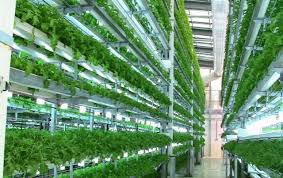3. Economic Benefits
Urban agriculture provides not only the environment; social, education and culture benefits but also significant economic benefits. In the urbanisation time, most of the cities are facing the challenge of food supplying and food insecurity. The poverty in the cities in developing countries is still the issue, which the policymakers need to find out the solution. The food miles or food transportation is another problem with both farmers in the rural areas as well as the business sectors in food supplying. Therefore, urban agriculture brings great opportunities for cities when it also helps to shorten the food miles of the cities’ demands but also reduces the cost for the fresh food supply (Steele 2017). In addition, as a community enterprise, urban agriculture often is supported based on its potential to stimulate a local economy through job creation, income generation, and the growth of small businesses. Besides, urban agriculture also can make fresh food more affordable, cheaper with more nutrition. For people participating in community farms or farming cooperatives, the food they grow replaces food they would have purchased; therefore, it could save a significant amount of money.

Vertical farming at Aerofarm. Source : Aerofarm .2021.
In terms of growing food in urban areas such as vertical farming, the water and energy use could reduce to 95% compared with the traditional farming and it helps to reduce the farming cost (Aero Farms 2019). Besides, the social benefits of urban agriculture about employment also have the effects on the economic benefits when it creates jobs and income many employees as well as reducing the unemployment rate (RUAF 2019). Furthermore, urban agriculture also helps to reduces and generates waste by utilising the organic waste to use for the farm when also reducing the transportation waste and food waste from rural farming (FAO 2019).
4. Health and Food Accessibility Benefits
Food is a mandatory need for our daily life, which is essential for human survival. Good food with appropriate nutrition will contribute to people’s health. Besides, the system to plant, transport and retails food to minimize the negative impacts to the environment but still affordable for the many people is one of the criteria of the sustainable and resilient food system. For example, only in Western Australia, 80% of the raw product is exported and 75% of food is imported (Pollard 2012). Therefore, sustainable food or urban agriculture is one of the significant focuses in the urbanisation decades in the twenty-first century. In addition to its potential for improving food security among urban residents, urban farming has been linked to a range of health benefits. Providing affordable access to fresh produce, especially in neighbourhoods with few grocery stores or supermarkets, it may foster interest in trying new foods; it may help reduce the consumption of processed foods.
Furthermore, in the urbanisation century, when the poverty and food insecurity is the main challenge for most of developing countries and even in the developed countries, it is the urgent need to secure the food supply system for the urban areas in order to help increase the health condition and malnutrition. Food security exists when all people, at all times, have physical and economic access to sufficient, safe and nutritious food that meets their dietary needs and food preferences for active and healthy life (Quisumbing et al.1996).

Hilton Harvest Community Garden in Western Australia. Source : Hilton Harvest Community Garden. 2019
Food in the cities also directly relates to gender equality and children’s health when women are the key factor in food security. Half of the population are female and their roles are significant in improving life in the future (Cordes 2012). The role of women in securing food demands and nutrition for the family is still essential in many developing countries. As a result, their children could have better health as well (especially for pregnant women) and they could take care of them better, reduce the cost of health treatments and risks for the children death rate (Cordes 2012).
You can read Part 1 of this article here: https://phanexperience.com/?p=306
